Stavanger—Norway's Secret
by Bob Brooke
At first glance, Gamle Stavanger, or Old Stavanger,
the area of town closest to the water, looks like a transplanted,
salty New England village, with its cobblestone streets lined with
one and two-story wooden houses faced with white clapboard. The air
smells salty, too, since the town lies along the Norway’s southwest
coast.
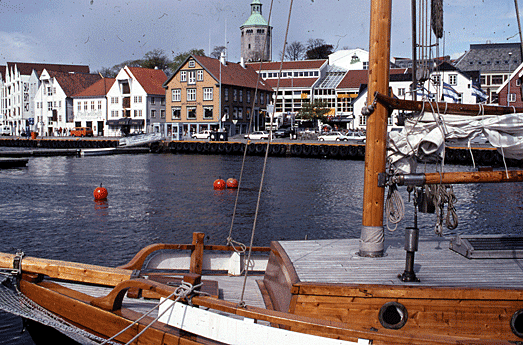
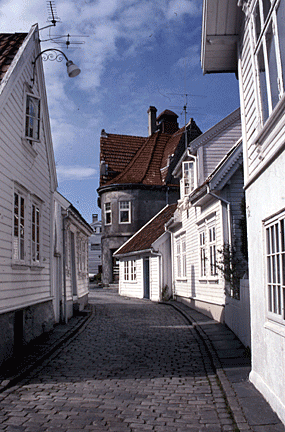 But
then you notice little differences. The roofs on most of the 18th
and 19th-century houses are unglazed tile, and casement windows
punctuate their facades. But what really stands out are the brightly
painted blue doors. Every street is neat as a pin. Charm seems to
seep out of the seaside atmosphere. The town also boasts the best
light in Norway for photographers and artists. It’s a picture
perfect old town with spectacular scenery beyond to rival some of
the most majestic in the world. But
then you notice little differences. The roofs on most of the 18th
and 19th-century houses are unglazed tile, and casement windows
punctuate their facades. But what really stands out are the brightly
painted blue doors. Every street is neat as a pin. Charm seems to
seep out of the seaside atmosphere. The town also boasts the best
light in Norway for photographers and artists. It’s a picture
perfect old town with spectacular scenery beyond to rival some of
the most majestic in the world.
Stavanger offers a total Norwegian maritime experience. Norway has a
long history with the sea and the town has been involved in most of
it.
History
Stavanger is Norway’s oldest city and its third largest. It’s name
comes from the Old Norse form of Stafangr. Many historians believe
that it was originally the name of the inlet now called Vågen, which
was the original site of the town, on the east shore of the bay. The
first part of the name is stafr meaning “staff or branch.”. The
second part is angr meaning “inlet or bay.” Facing the North Sea,
Stavanger has always been economically dependent on its access to
the sea.
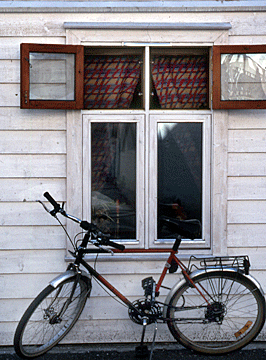 The
first traces of settlement in the Stavanger region date from the
days when the ice retreated after the last ice age about 10,000
years ago. A number of historians have argued that North Jæren was
an economic and military center as far back as the 9th and 10th
centuries with the consolidation of the nation at the Battle of
Hafrsfjord around 872. The
first traces of settlement in the Stavanger region date from the
days when the ice retreated after the last ice age about 10,000
years ago. A number of historians have argued that North Jæren was
an economic and military center as far back as the 9th and 10th
centuries with the consolidation of the nation at the Battle of
Hafrsfjord around 872.
With the founding of the Bishopric of Stavanger by Bishop Reinald in
the 1120s, the town took on a new role as a religious center. But
with the Protestant Reformation in 1536, Stavanger's role as a
religious center declined, and the establishment of Kristiansand in
the early 17th century led to the relocation of the bishopric.
However, rich herring fisheries in the 19th century gave the city
new life.
This history of Stavanger is one of boom and bust. During most of
this time, the shipping, shipbuilding, and fish canning industries
sustained it. The latest boom was after the discovery of oil in the
North Sea. Today, the city has become the supply center for the
off-shore oil rigs.
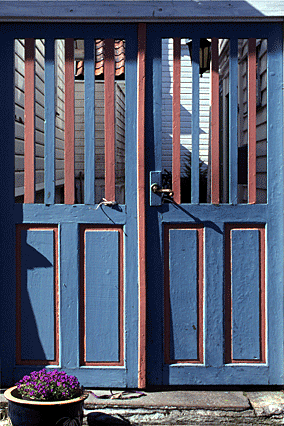 While
other Norwegian coastal towns have suffered from the precarious
fortunes of fishing, Stavanger has over the years grown into one of
Norway's most dynamic economic power bases. Fish canning and its own
merchant fleet brought initial prosperity, which shipbuilding and,
more recently, the oil industry have since sustained: the port
builds the rigs for theoffshore oilfields and afterward refines the
oil before dispatch. While
other Norwegian coastal towns have suffered from the precarious
fortunes of fishing, Stavanger has over the years grown into one of
Norway's most dynamic economic power bases. Fish canning and its own
merchant fleet brought initial prosperity, which shipbuilding and,
more recently, the oil industry have since sustained: the port
builds the rigs for theoffshore oilfields and afterward refines the
oil before dispatch.
Stavanger was one of the first settlements in Norway influenced by
the European Christian culture during the Viking era. In the mid
10th century, traditional Norse burial customs ceased in the
Stavanger area, at the same time as the first Christian priests
began their work. Large stone crosses are visible memorials of this
early Christian age.
Archaeological investigations in the current downtown and in the
crypt of the Domkirke show that the great fire of 1272 probably left
large parts of the city and the Cathedral in ruins, including the
Cathedral’s Romanesque chancel.
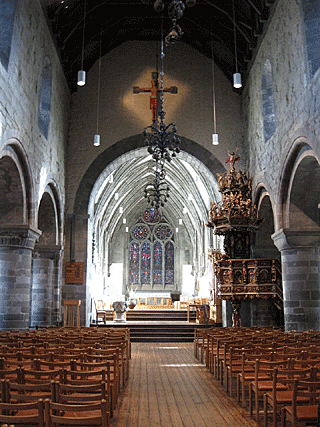 Stavanger
has a long history of education in Western Europe. The first
organized education in the city probably took place at a Benedictine
monastery in the mid-12th century. Stavanger was a church city
throughout the Middle Ages up to the Reformation. But the
Reformation, however, dealt a hard blow to the Church in specific
and Stavanger in general. The cathedral, the bishop and canons of
the monastery had been large landowners. Recession of the city began
with the loss of people in rural areas, as a result of which the
revenues of the cathedral and the bishop fell dramatically due to
reduced rental income. In 1537, the king confiscated the bishop's
and the monastery's estate and property. Stavanger
has a long history of education in Western Europe. The first
organized education in the city probably took place at a Benedictine
monastery in the mid-12th century. Stavanger was a church city
throughout the Middle Ages up to the Reformation. But the
Reformation, however, dealt a hard blow to the Church in specific
and Stavanger in general. The cathedral, the bishop and canons of
the monastery had been large landowners. Recession of the city began
with the loss of people in rural areas, as a result of which the
revenues of the cathedral and the bishop fell dramatically due to
reduced rental income. In 1537, the king confiscated the bishop's
and the monastery's estate and property.
Old Stavanger
Gamle Stavanger is the least changed part of town. The buildings
here are a product of their own wealthy age. Wooden warehouses flank
the western dockside, split by a succession of narrow lanes. Stroll
up any of them, and you're in the heart of the residential quarter,
once home to local seamen and visiting merchants. The long rows of
white-painted houses, gas lamps, picket fences, and tiny terraced
gardens, most dating from the late 18th century, make for an
engaging walk along the cobbled streets.
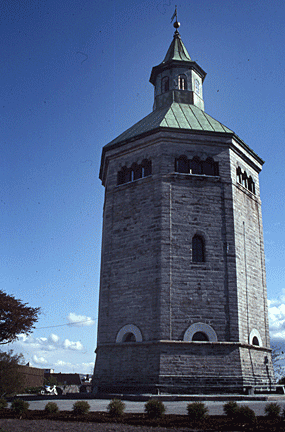 Here,
amongst the clapboard houses stands the
Norwegian Canning Museum, a
reconstructed sardine-canning factory which gives a glimpse of the
industry that saved Stavanger from decay in the 19th century. Here,
amongst the clapboard houses stands the
Norwegian Canning Museum, a
reconstructed sardine-canning factory which gives a glimpse of the
industry that saved Stavanger from decay in the 19th century.
Walk back through Gamle Stavanger toward the center, and you'll pass
the Maritime Museum, which offers another insight into Stavanger’s
history. The exhibits are as much to do with the trade that the
shipping industry engendered as the sea itself. Be sure to see the
old sailmaker's room and various reconstructed shop and office
interiors.
Along the length of the harbor, there's a daily market, selling
flowers and produce, while for fresh fish you should check out the
teeming watertanks on the wharf. The streets around Skagen, on the
eastern side of the harbor, make up the town's shopping area, a
bright mix of spidery lanes, pedestrianized streets and
white-timbered houses, that covers the area where the original
settlement of medieval Stavanger once lay—though little remains of
the layout, or the atmosphere. The Valberg Tower was a 19th-century
fire watchtower which gives sweeping views of the city from its top.
 The
only relic of medieval Stavanger is close to Lake Breiavatnet which
sits in the middle of the city. The pointed-hat towers of the
Domkirke, or cathedral, hide a Romanesque church altered by modern
restoration. The classically simple interior, built by English
craftsmen, has been spoiled by ornate 17th-century additions,
including an intricate pulpit and five huge memorial tablets
adorning the walls of the aisles: all a whirling jumble of richly
carved angels, crucifixes, death masks, animals, and apostles. The
only relic of medieval Stavanger is close to Lake Breiavatnet which
sits in the middle of the city. The pointed-hat towers of the
Domkirke, or cathedral, hide a Romanesque church altered by modern
restoration. The classically simple interior, built by English
craftsmen, has been spoiled by ornate 17th-century additions,
including an intricate pulpit and five huge memorial tablets
adorning the walls of the aisles: all a whirling jumble of richly
carved angels, crucifixes, death masks, animals, and apostles.
Around from the cathedral east of the lake is the Norwegian
Emigration Center, with its extensive archives. If you have any
Norwegian ancestry, this is the place that will help you learn about
your past.
< Back to Norway
Go to The King of Canned Fish > |